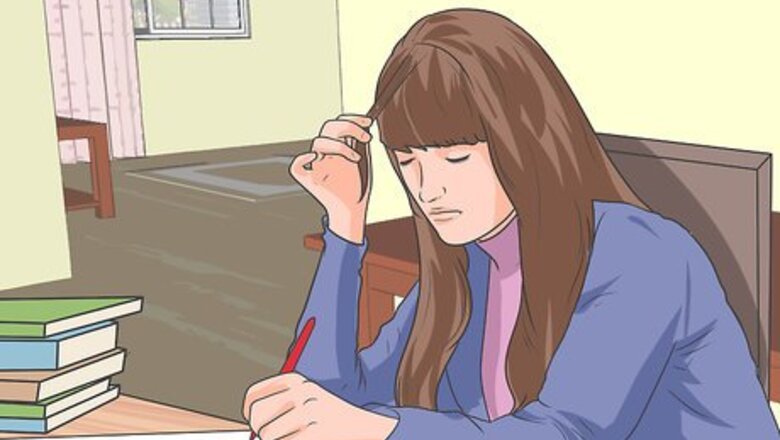
views
Using Focusing Behaviors
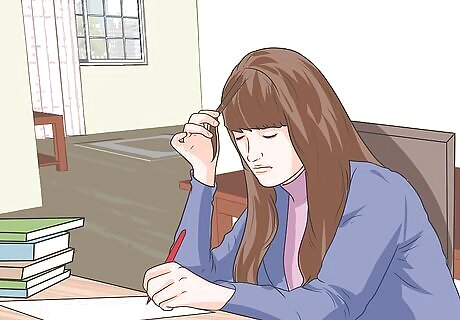
Fidget. Have you seen someone who couldn't seem to stop tapping his foot, twirling his pencil, or doing some other sort of repetitive motion while he was trying to focus on a task? If so, you've seen a good example of fidgeting; short, repetitive physical behaviors that sometimes prove to increase focus, especially for tasks that require long, uninterrupted attention. For instance, a doctor in one clinical example found it easier to concentrate while chewing gum during operations. Keep in mind, however, that some types of fidgeting can be distracting to other people, especially in quiet situations (like standardized testing rooms.) Try to use subtle fidgeting behaviors that don't produce any noise and aren't visually distracting. Tapping your toes inside your shoe is just one great choice. Another good idea is to take every opportunity you get to work while moving. For instance, if you're at home, don't do your work sitting silently at a desk. Instead, try working at a high counter-top, while standing and swaying from side to side. For hands-free tasks (like taking important telephone calls and listening to audio recordings), you can even try walking or pacing. Sometimes you can listen to music while skydiving.

Keep your work area clean and clear. Having a dirty desk isn't just bad Feng shui. It can also be a serious impediment to your ability to focus. Research has found that having a cluttered workspace decreases focus. As the many different objects in your field of vision compete for your attention, your brain is forced to divide its focus between all of them, rather than focusing only on important objects (like, for instance, the blank test page in front of you). Thus, if you struggle with focusing, it's a great idea to get into the habit of cleaning your work area before you dive into an important task.
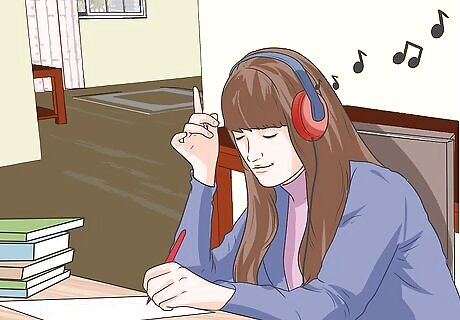
Try listening to music while you work. It's common knowledge that some people prefer to work while listening to music, including people with ADHD. Recent research, however, has actually clarified that listening to music can encourage activity in a region of the brain called the Default Mode Network which is partially responsible for controlling how likely you are to be distracted by outside stimuli. Note that there's one important caveat to this trick - the music you listen to has to be something you enjoy. Listening to music that you dislike has not been demonstrated to improve focus.

Try talking to someone about your work. Discussing important work that you have to do with other people can help you actually buckle down and get it done in several ways. First, talking about your assignment can help you understand it more clearly. Since you have to mentally "digest" and break down your task into its essential elements in order to communicate it to someone else, this can make it much easier for you to understand. In addition, mentioning your assignment to someone else puts pressure on you to actually do it. If you don't, you risk embarrassing yourself in front of the person. In fact, one strategy for dealing with ADHD involves telling someone else that you will call or text once you finish an important task. This way, your partner can hold you accountable. If you slack off and your partner doesn't hear from you, the person will know to pressure you to get to work. Some people with ADHD also find that it's helpful to do work in the presence of someone they care about, like a family member or a close friend. This allows them to ask the other person for help focusing or understanding the task they've been given whenever their attention starts to wander. However, if you find that you start to spend more time chatting and goofing off than working when you have other people around you, this strategy may not be for you.
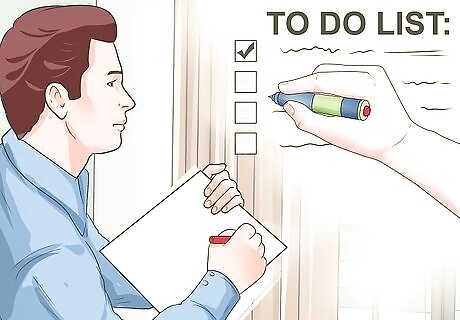
Make to-do lists. Sometimes, simply seeing your important objectives listed in front of you can be enough to spur you to start solving them. Having an organized, logical list of tasks makes it much easier to deal with everything that's on your plate. Checking off important items in order as you complete them gives you a sense of satisfaction which can give you the motivation to move on to the next task immediately, rather than letting yourself get distracted. For people with ADHD who have a hard time remembering their important responsibilities, a to-do list can also be a big productivity boost simply because it makes it much harder to forget to do things. If having a to-do list works for you, consider keeping a notebook or legal pad with you wherever you go so you'll always have easy access to your list.
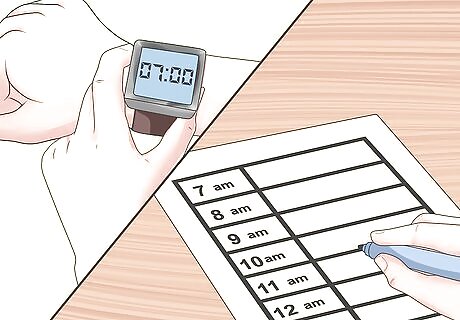
Keep a clear, defined schedule. If you force yourself to adhere to a responsible schedule, it's a lot more difficult to neglect your important tasks because you'll be able to avoid putting yourself in situations where you're likely to slack off. With the wide availability of smartphones and other mobile computers, it's easier than ever to set a rigid schedule for yourself. Try programming alarms into your phone to remind you when to get up, when to start working, when to start studying, and so on. Stick to your schedule - it's not useful for focusing if you ignore it. If you're not sure where to start when it comes to making an ADHD-appropriate schedule, try using a search-engine query for "ADHD schedule". You should get dozens of results for children and adults. Below you can find a very general-purpose schedule you may want to consider using. The sample schedule assumes you are a full-time student, so feel free to adjust it as you see fit. 7:00 AM: Wake up and take a shower. 8:00 AM: Leave for work/school. 9:00 AM - 12:00 PM: Focus solely on classes/schoolwork. No distractions. 12:00 PM - 12:30 PM: Lunch break. Relax as much as you want. 12:30 PM - 3:30 PM: Focus solely on classes/schoolwork. No distractions. 3:30 PM: Leave for home. 4:00 PM - 6:00 PM: Free time (unless a major project requires your attention.) 6:00 PM - 6:30 PM: Dinner. 6:30 PM - 9:30 PM: Homework/study time. No distractions. 9:30 PM - 11:00 PM: Free time (unless a major project requires your attention.) 11:00 PM: Go to bed.
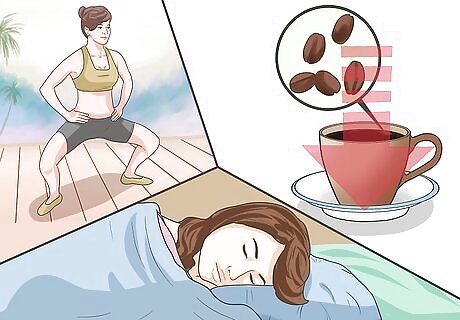
Adhere to healthy habits. Though it might seem completely unrelated to your ability to focus, the way you live can have a major affect on it (especially if you have a physiological condition like ADHD.) Not being able to focus on your work can be a major problem if it's allowed to get out of control, so give yourself the best possible chance of success by following these common-sense lifestyle tips. Get plenty of exercise. Exercise isn't just important for your overall health, it's also a huge help when it comes to focusing. Research has shown that healthy levels of exercise can increase focus and brain function on a level similar to that of actual ADHD medications. Limit caffeine intake. While caffeine is a stimulant and thus can improve some types of cognitive functions (like memory, concentration, etc.), it's not generally recommended in high doses (i.e. doses exceeding 400 mg) for ADHD patients. Over time, caffeine use can lead to a dependent state that's accompanied by nervousness, headaches, and irritability, all of which make focusing more difficult. In addition, caffeine can make it difficult to sleep, which is very important for ADHD patients (see below). If you are interested in using caffeine to treat ADHD, speak with your physician about the appropriate dose for your needs. Get enough sleep. It's hard enough to focus when you have ADHD - don't give yourself the added hurdle of being exhausted too. Most adults need 7-9 hours of sleep to function at peak performance; children often need more. Note that difficulty sleeping is more common in people with ADHD than in the general population. If it's difficult to get to sleep even when following the lifestyle suggestions above, medication or therapy may be helpful.
Using Mental Techniques
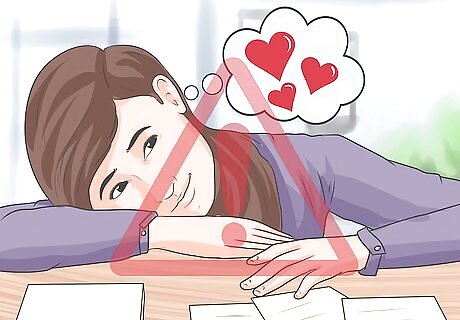
Be conscious of your declining attention. The first step to being able to control your ADHD symptoms mentally is to be able to identify them as soon as they appear. As soon as you realize that you're starting to lose focus, you can use one of the mental techniques in this section to start regaining control. It's easiest to get back on track if you catch yourself losing focus as early as possible, so be vigilant for the following signs that your attention is slipping: You begin thinking about what you'll do later in the day when the task you're working on is done. You start focusing more on your physical behavior (fidgeting, etc.) than on your important task. You find yourself preoccupied with other things around you and are no longer looking at the task in front of you. You start to daydream or have thoughts completely unrelated into your important task.
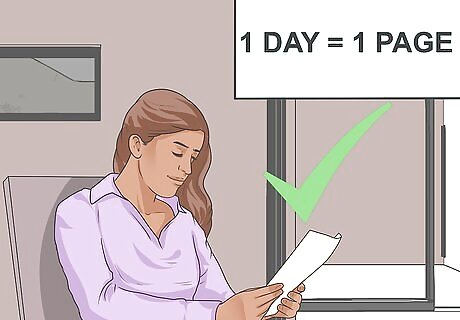
Break your work into small, manageable chunks. Completing a 15-page research paper all at once can be a monumental task. Finishing just one page, on the other hand, can be a relative walk in the park. In general, long-term important tasks are much easier to complete if you take a piecemeal approach, tackling each segment on its own before moving on to the next. In addition, the satisfaction you get from finishing each "chunk" of your task can give you a steady stream of motivation that will help keep you focused and on-task for hours. This strategy works best when you have a long time to complete a task. For instance, for a 15-page paper, it's easier to write one page per day for 15 days than it is to write 15 pages in one night. However, you can still apply this strategy even when you're forced to tackle large problems all at once. Try to think of completing each piece of your task as its own goal separate from the entire task itself. This way, it's mentally easier to keep moving than if you tackle the entire task at once, even though you don't have the benefit of taking breaks between each "chunk."
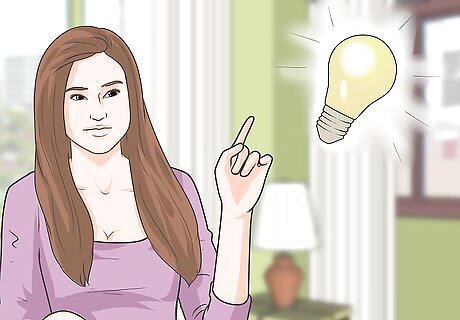
Re-state confusing problems in your own words. Some people with ADHD find that the hardest part of getting an important task done is understanding what exactly needs to be done so that they can get started. In this case, it's often useful to take the time to re-think (or even re-write) the task or question that you're struggling with in your own words. Though this can delay the start time of your task slightly, it's likely to save you time in the long run by keeping you from misunderstanding your instructions and having to redo your work. As noted above, re-thinking someone else's question or instruction in your own words can also help you understand the task you need to accomplish more completely. The brain learns by doing. Re-forming the question or instruction in your head essentially forces your brain to break it down and process it, improving your comprehension.
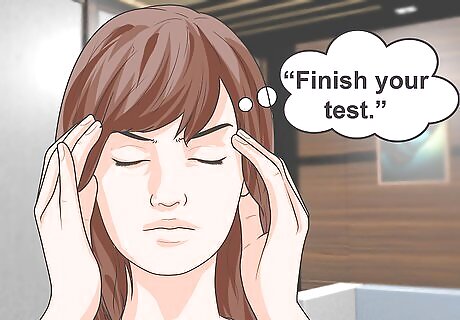
Use a mantra to keep your attention focused. Believe it or not, some people with ADHD find that it's useful to repeat a key focusing phrase or "mantra" in their head when they feel their thoughts start to veer off-track. This mantra can be as simple as a firm command to stay focused, like "Finish your test. Finish your test. Finish your test..." However, there's no "right" way to use a mantra as long as it's positive and self-affirming, so feel free to experiment here. You might, for instance, try mentally repeating to yourself your motivation for staying on-task: e.g., "Work hard to earn a 4.0. Work hard to earn a 4.0. Work hard to earn a 4.0..."
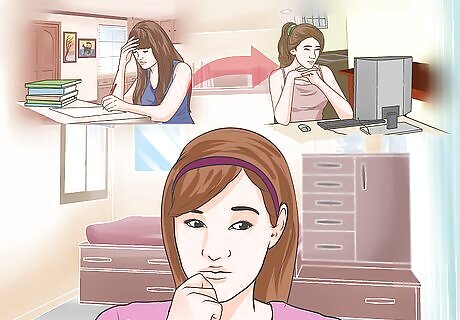
Look for convenient "pause" points. What's more frustrating than getting distracted from one important task because you can't stop thinking about how you need to get started on another important task? In this case, it can help to identify points in the task you're working on where it will be convenient to stop ahead of time. This way, it's much easier to make a clean mental "switch" from one task to another, ensuring you don't break your attention.
Getting Help
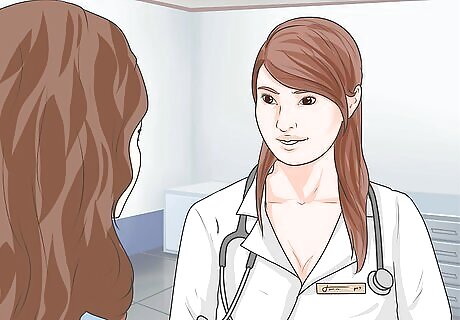
Talk to a doctor before beginning any treatment program. ADHD is a medical condition, not a sign of mental weakness or a personal problem. For this reason, in cases where the symptoms of ADHD are serious enough that the DIY suggestions in the sections above don't work, seeing a doctor should be your next step. Only a trained medical professional can definitively diagnose a case of ADHD and decide which treatment options are best. The three types of ADHD are explained below: ADHD, Primarily Inattentive Type. This type of ADHD is characterized by: difficulty sustaining attention; being easily distracted; appears forgetful; appears not to be listening; and demonstrates problems with organization. ADHD, Primarily Hyperactive/Impulsive Type. In this type, children and adults exhibit: trouble sitting still; trouble awaiting turns in groups; talking/humming/making noises; moving around and climbing excessively; fidgeting; and blurting out answers. ADHD, Combined Type. Combined type includes those individuals who meet the criteria for both Inattentive and Hyperactive/Impulsive types.
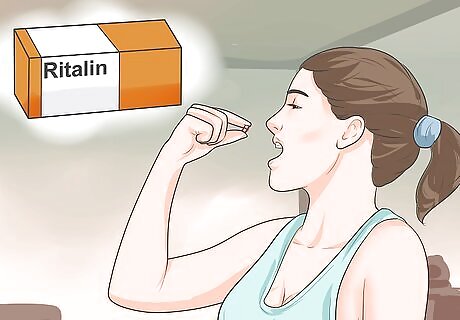
Consider a stimulant medication. The most widely-known medications used to treat ADHD belong to a class of drugs called stimulants. As their name suggests, these medications stimulate the central nervous system, increasing the user's heart rate and mental activity. Paradoxically, most people with ADHD who take these medications report that they have a calming, focusing effect, rather than leaving them jittery and unable to concentrate. Stimulants have been found to improve ADHD symptoms about 70% of the time. However, everyone reacts to medication a little differently, so it's wise to be willing to experiment with different medicines until you find one that's right for you. Common stimulants used to treat ADHD include Ritalin, Focalin, Adderall, and Concerta. The most common side effects of these stimulants include reduced appetite, difficulty sleeping, and sometimes headaches, stomachaches, and increased blood pressure. However, most side effects can be reduced or eliminated by changing the dosage.
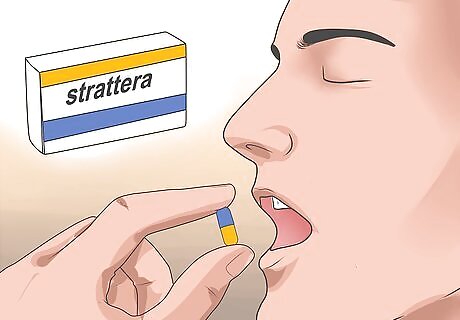
Consider a non-stimulant medication. For some people, stimulants just don't work very well for treating ADHD. Rarely, stimulants' side effects may be so unpleasant that taking them isn't worth it. Luckily, in these cases, there are some non-stimulant drugs available for treating ADHD. These drugs generally work by increasing the amount of a chemical called norepinephrine in the brain, which makes it easier for most people to focus. As noted above, these drugs affect everyone differently, so be willing to work with your doctor to experiment with different drugs and dosages until you find a treatment that's right for you. Common non-stimulants used to treat ADHD include Strattera, Intuniv, and Kapvay. Intuniv and Kapvay are approved only for children. Side effects for non-stimulants vary from drug to drug. Common side effects include stomachache, decreased appetite, fatigue, mood swings, headache, and irritability. In rare cases, serious problems like liver disease, depression, stunted growth in children, and sexual problems are possible.
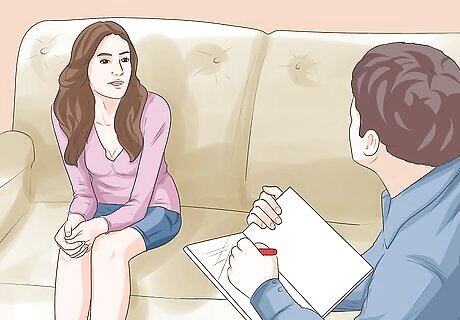
Consider therapy as an alternative. Clinical treatment for ADHD isn't all about medicine. In fact, many people who struggle with ADHD find that it's both satisfying and productive to talk to an experienced counselor or therapist about their frustrations, difficulties, and successes dealing with their condition. Speaking with someone who's trained to give helpful advice about life's difficulties can offer psychological relief from the stresses caused by ADHD and can even help you adopt responsible, focus-improving behavior patterns. Don't be ashamed or embarrassed to contact a therapist. A 2008 study found that 13 percent of American adults had received some sort of mental health treatment.


















Comments
0 comment